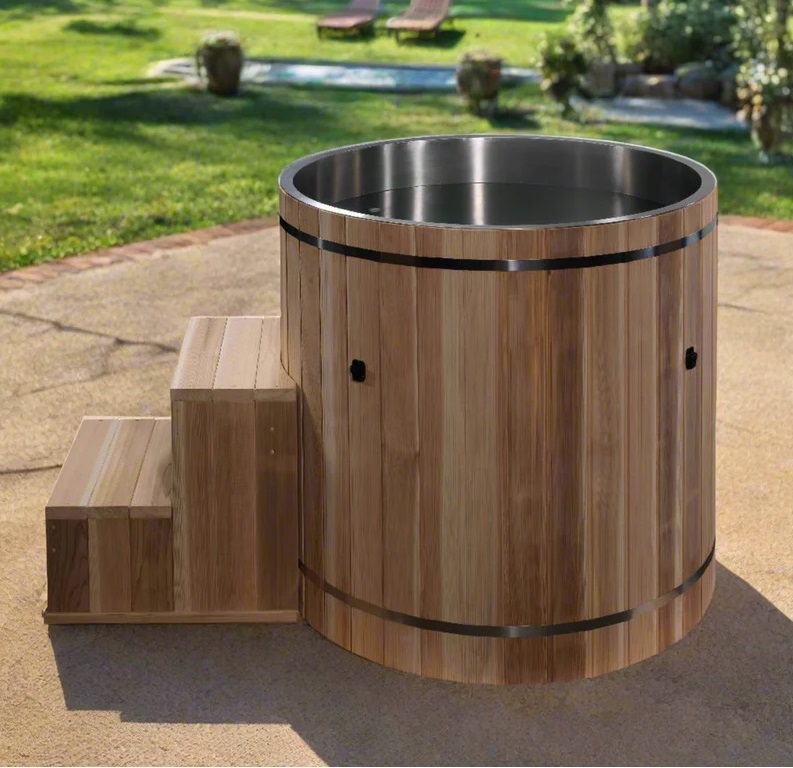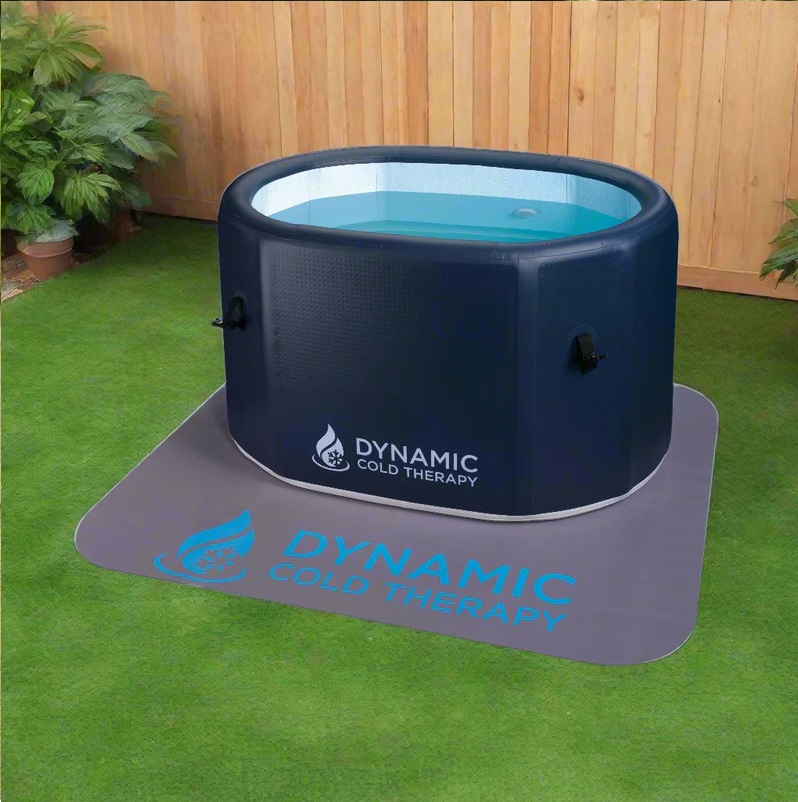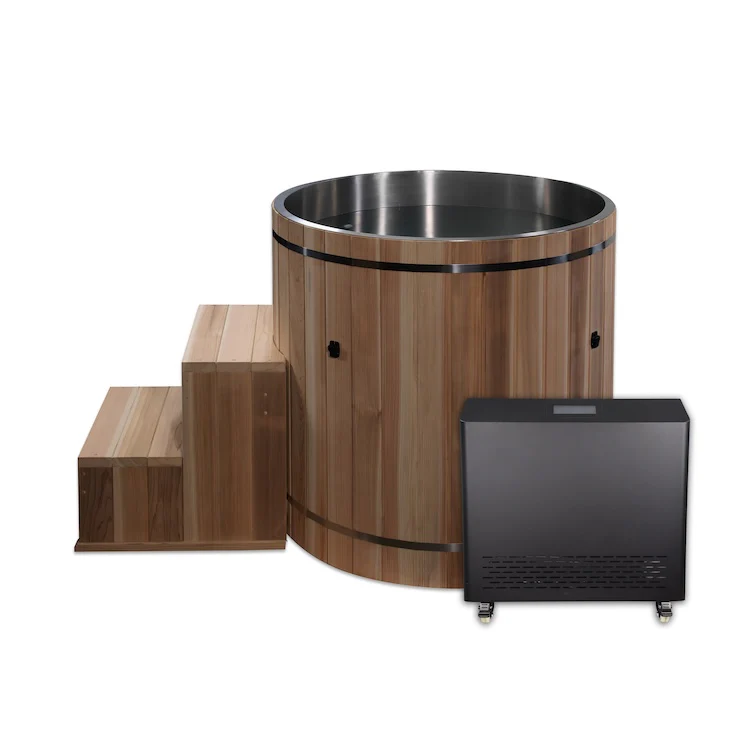Cold plunges and cold tubs have gained popularity in the wellness world for their potential to boost mood, accelerate recovery, and support mental health. While these terms are often used interchangeably, they aren’t exactly the same. Let’s explore the key differences between cold plunges and cold tubs to help you decide which is best for post-workout recovery or self-care.
Have you ever wondered why a cold shower feels invigorating after a hot sauna or why some people swear by their morning ice baths?
What Are Cold Plunges?
Cold plunges, sometimes called “plungers,” are insulated tubs designed for cold water immersion therapy. This type of therapy aims to provide therapeutic benefits through exposure to cold water.
Construction and Features – Cold plunges are typically made from materials like acrylic, fiberglass, or metal to withstand ice-cold water. Some models feature a wooden exterior for added durability and aesthetic appeal.
These tubs often come in barrel-like shapes that allow for full-body immersion. Many are equipped with advanced features such as temperature control units, covers, and circulation pumps to keep the water at an even temperature. Some models even have built-in heating elements for contrast therapy, also known as the Nordic Cycle, which involves alternating between hot and cold treatments to improve circulation, reduce muscle soreness, and enhance sleep.
How They Work – To use a cold plunge, fill it with water using a hose or other water source until you have enough for full immersion. The built-in cooling system will then chill the water to the desired temperature, usually between 50 to 59 degrees Fahrenheit. You can then submerge yourself up to your neck for a few minutes to reap the health benefits.
What Are Cold Tubs?
Cold tubs, also known as ice baths or ice barrels, are oversized bathtubs used to cool the body quickly, whether after a workout, sauna session, or for therapeutic purposes.
Construction and Features – Cold tubs are made from sturdy materials like fiberglass and heavy-duty plastic, often with polyurethane foam insulation to retain the cold and withstand regular use. Unlike cold plunges, cold tubs do not usually come with mechanical parts such as chillers or pumps, making them simpler to operate. Just add water and ice, and they’re ready for use.
Key Differences Between Cold Plunges and Cold Tubs
Size and Capacity – Both cold plunges and cold tubs come in various sizes, from compact models for individual use to larger, communal options popular with sports teams.
Installation and Setup – Cold plunges are more convenient to set up and use, often featuring built-in cooling systems and plug-and-play functionality. Cold tubs, on the other hand, may require more effort to fill, drain, and maintain the cold temperature with ice.
Temperature Consistency – Temperature consistency is crucial for effective cold therapy. While ice baths may start out colder, their temperature can fluctuate as the ice melts. Cold plunges, with their built-in chillers, maintain a consistent temperature throughout each session.
Maintenance and Cleaning – Cold plunges often include filtration and circulation systems, making them relatively low-maintenance. Cold tubs need more frequent cleaning and require ice for each use, which can add to the upkeep.
Cost and Affordability – Cold plunges are usually more expensive upfront due to their integrated features. However, they can be seen as long-term investments in your health. Cold tubs may seem more affordable initially, but the cost of continually restocking ice can add up over time.
Portability and Space Requirements – Cold tubs are typically more portable than cold plunges, which are heavier due to their advanced cooling and filtration systems. Both options, however, need a dedicated water source and drainage area.
Health Benefits of Cold Plunges and Cold Tubs
Regardless of their differences, both cold plunges and cold tubs offer similar health benefits when used for full-body immersion. This exposure to cold triggers your fight-or-flight response, temporarily shocking the body before it adapts. Here are some of the benefits:

- Faster Muscle Recovery: Cold therapy can help reduce muscle soreness and speed up recovery. A 2022 study indicates that cold water immersion enhances muscle blood flow and reduces pain perception.
- Improved Circulation: The constriction and dilation of blood vessels during cold and warm cycles promote better blood flow and cardiovascular health.
- Enhanced Metabolism: Cold exposure activates brown fat tissue, increasing your metabolic rate and calorie burning as your body generates heat.
- Mental Focus and Resilience: Regular cold therapy can improve mental focus and resilience, promoting a sense of calm and composure.
- Stress Reduction: Cold plunges specifically stimulate the vagus nerve, which can lower stress levels, boost mood, and promote relaxation.
Choosing the Right Option for You
The best choice between a cold plunge and a cold tub depends on your specific needs, frequency of use, and available space. Both can provide excellent health benefits, so consider factors like budget, maintenance, and convenience. Explore high-quality options and learn more about the wellness benefits of cold therapy by contacting a trusted provider like 360 Fitness Superstore!
